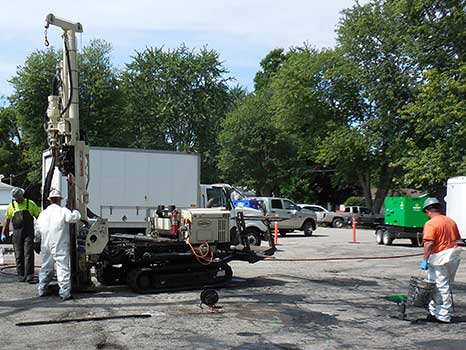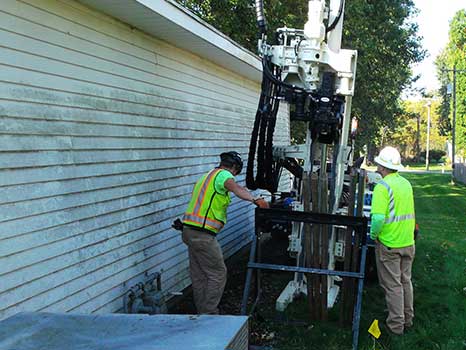Petroleum Contamination Blasted
Targeted Injections Reduce Time & ExpensePROJECT FACTS:
CONTAMINANTS OF CONCERN – Petroleum Impacts, BTEX, Napthalane and 1,2,4-Trimethylbenzene (chemicals associated with storage of unleaded gasoline)
KEY FACTS – Petroleum impacts associated with a release of unleaded gasoline from an underground storage tank (UST)
DESCRIPTION OF SITE – This senior care center is located in a residential and commercial setting. It was previously used for agricultural purposes.
SITE SITUATION:
Historical storage of unleaded gasoline in a single 500-gallon steel underground storage tank (UST) resulted in the release of petroleum hydrocarbons to the subsurface. The release occurred between the installation of the UST in approximately 1981 and its removal in the early to mid-1990s. Once released to the subsurface, petroleum hydrocarbons moved vertically downward and encountered groundwater. A portion of the petroleum hydrocarbons entered the dissolved phase and migrated laterally due to a combination of groundwater transport mechanisms (advection and dispersion). The fluctuation of static water levels across the Site created a smear zone, which resulted in petroleum impacts to soil at concentrations exceeding the remediation objectives. The extent of impacts to soil and groundwater was fully delineated on-Site. However, groundwater impacts were observed at levels that required remediation for the Site to achieve unrestricted closure.
ACUITY INSIGHT:
AcuityES recognized data gaps needed to be resolved and completed additional soil and groundwater characterization. The additional characterization was necessary for developing appropriate remedial design specifications. Upon evaluation of the data, the BOS 200® Trap & Treat® technology was selected as the remedy to be applied to the Site.
SOLUTION:
By completing the additional remediation design characterization (RDC), AcuityES was able to reduce the client’s total project cost. The RDC data allowed AcuityES to minimize the number of injection points, which served to limit the amount of product necessary for application of the selected remedy and the time required to complete the injection process.
ACTION TAKEN:
Petroleum-impacted saturated soil and groundwater were addressed using an in situ Trap & Treat remediation product sold under the trade name BOS 200. The activated carbon substrate adsorbs the petroleum compounds, and treatment is accomplished through enhanced biodegradation of the absorbed contaminants utilizing BOS 200 remediation ingredients. BOS 200 has an established performance history for treating petroleum impacts in soil and groundwater. The BOS 200 product mixture was pumped via a positive-displacement injection pump through direct push technology drill tooling into the soil and aquifer matrices.
RESULTS:
The performance-monitoring data collected six months after the injection process indicates that the Site is moving towards obtaining unrestricted closure. Prior to injection of the BOS 200 product mixture, petroleum impacts to groundwater above Indiana Department of Environmental Management (IDEM) screening levels were observed in three monitoring wells.
The observed concentrations of benzene, naphthalene and 1,2,4-trimethylbenzene have been reduced to concentrations below the laboratory method detection limit in two of the three monitoring wells. The observed concentrations in the third monitoring well are approximately 30 to 60 percent of baseline concentrations.
As the BOS 200 establishes the geochemical conditions conducive to the bioremediation of petroleum-impacted groundwater; AcuityES anticipates future concentration decreases in groundwater at the Site and meeting closure objectives prior to completion of the performance-monitoring program.





